Exploring St. Lucia
St. Lucia was one of the 2 ports that I’d been particularly looking forward to, and I was very much saddened to see the devastation and death brought by Hurricane Tomas just a week before our scheduled arrival. We’d had a very friendly email discussion with the tour guide we had booked, but Spencer lives in the hardest-hit area and couldn’t get to us. He’d arranged an alternate tour, but much of the island is still inacessible. Our ship and the P&O Oceana were the first ships to be allowed back into port, and the Noordam had brought a substantial stock of disaster relief supplies for the island.
November 7: When I looked outside just after 7:00am we were just about at the runway of the Castries airport, where a plane from Caribbean operator liat was about to take off.
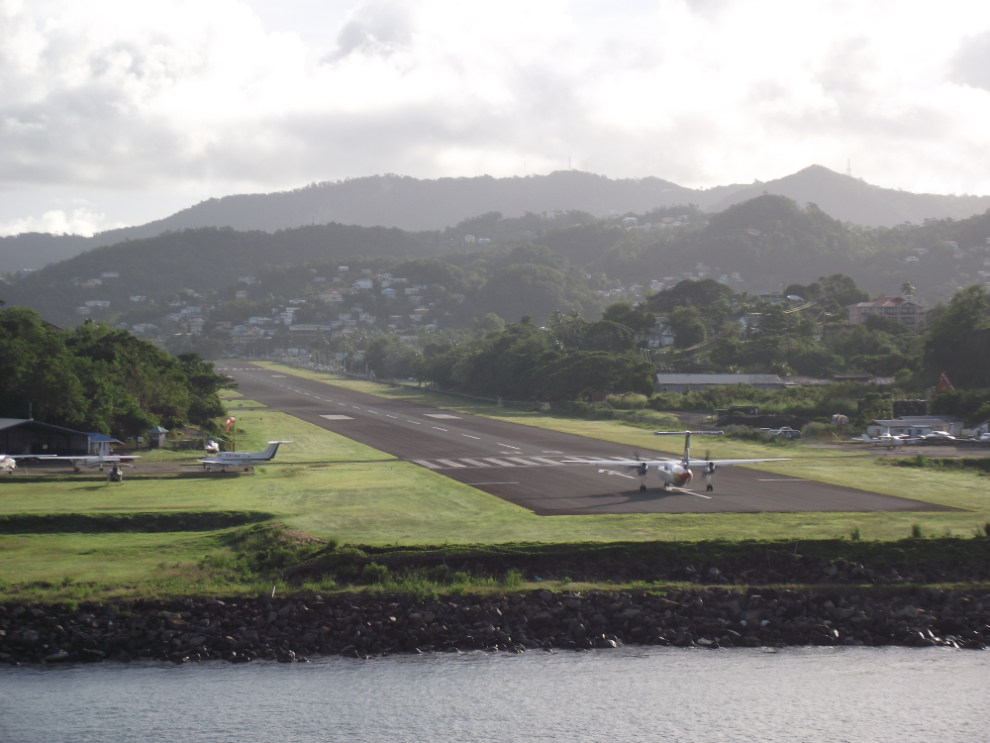
I still don’t know what this structure directly above the airport was originally – the top floor is comprised of tiny apartments.

A P&O cruise ship, the Oceana, was docked at the downtown wharf, but the facility that we pulled up to was fairly new and much nicer.

This small, postcard-perfect harbour is directly north of the cruise ship facility.
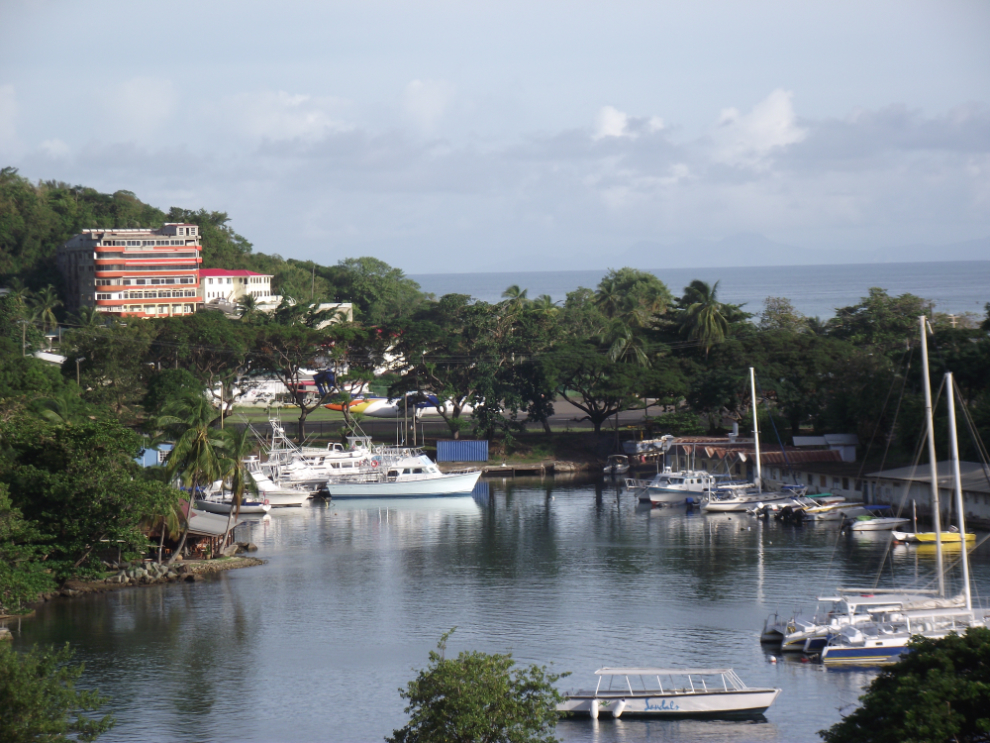
We met our new guide at 8:30 and were soon on our way to see what we could of the island. Downtown Castries is very run-down, and at the edge of the downtown area are these cottages and shanties.
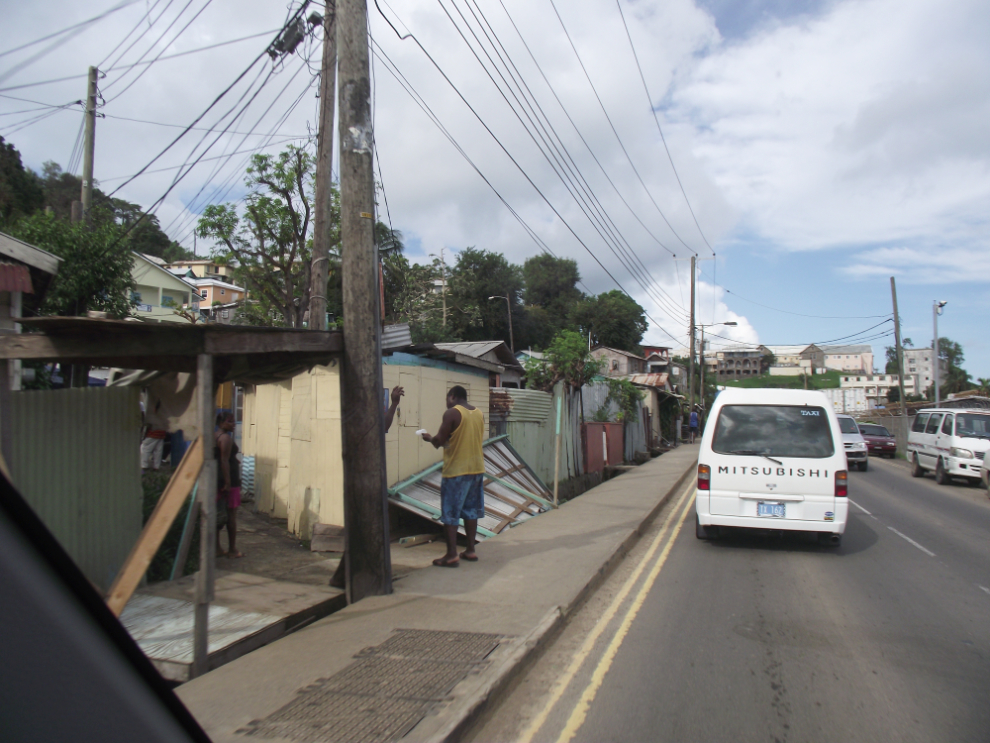
There was no sign of a hurricane having come through Castries, but as we headed up into the hills signs such as this mudslide started to appear.
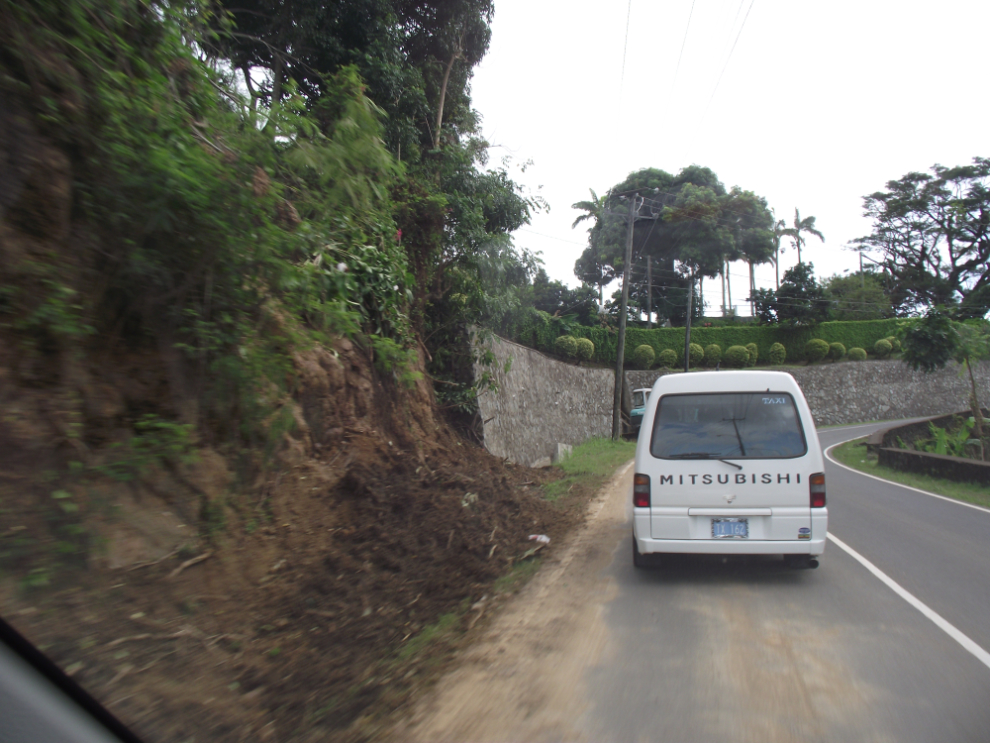
Government House, home of the Governor-General, is across the road from the best viewpoint overlooking Castries.
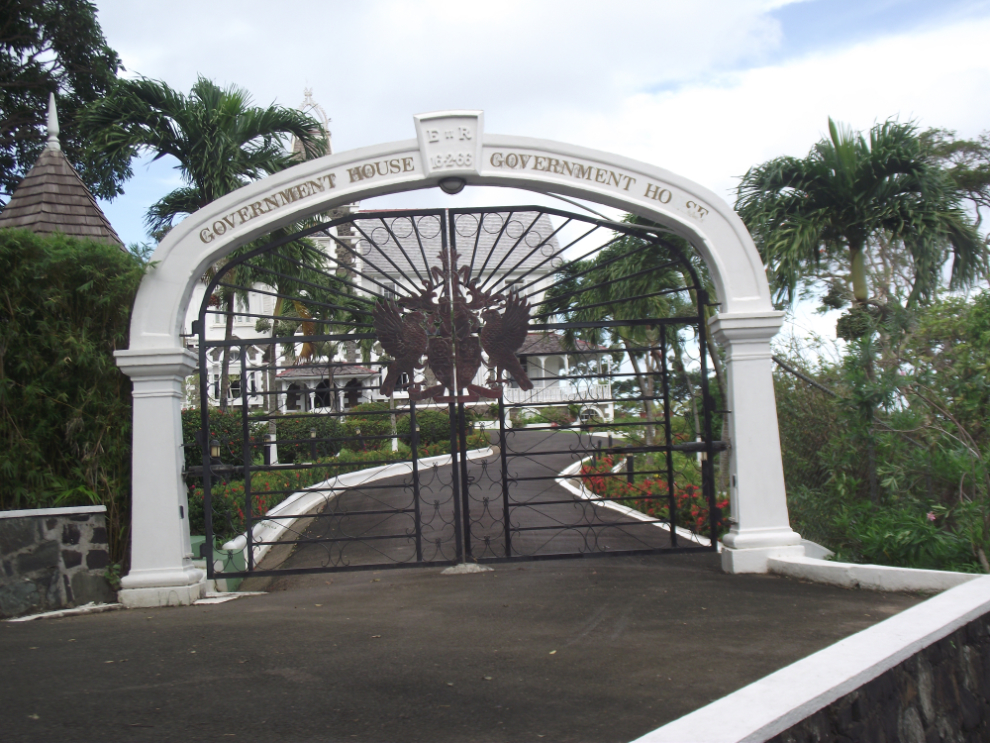
This photo was shot from that viewpoint. There were many vendors with tables set up around and on the viewing deck. This was my first experience in a very long time with aggressive street vendors, and I bought a very nice Saint Lucia golf shirt.
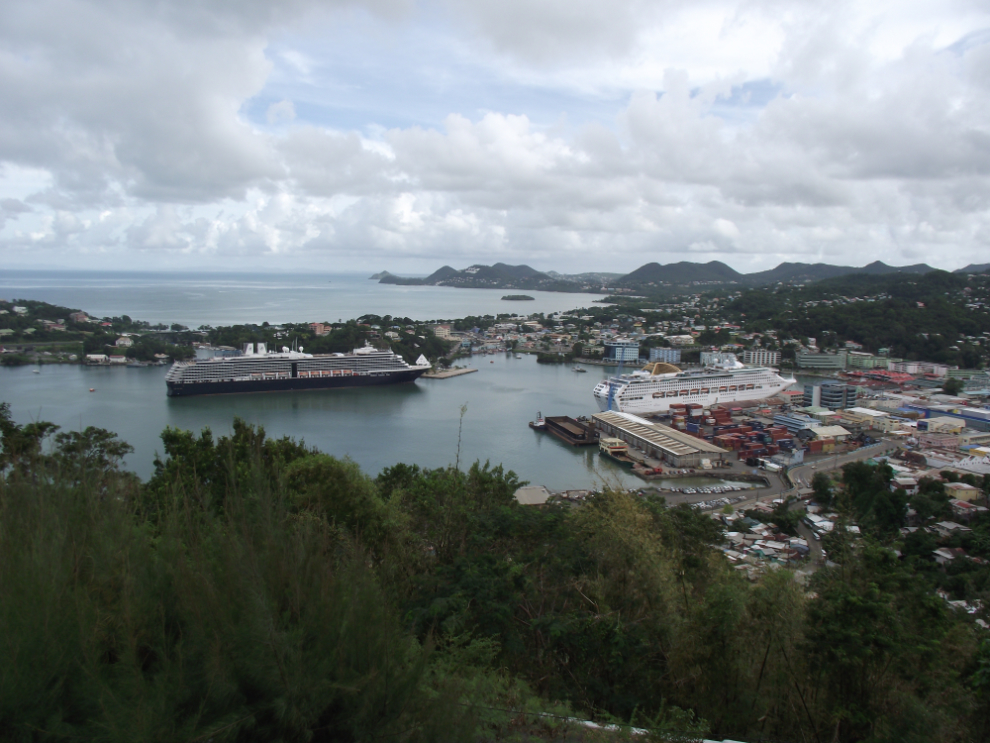
A few minutes later we got the first of what would become a common sight – people getting water from roadside springs and even ditches.

By 9:15 we had made our way up to a huge former military base atop a mountain overlooking Castries. Some of the buildings are derelict but some are being used as the Sir Arthur Lewis Community College.
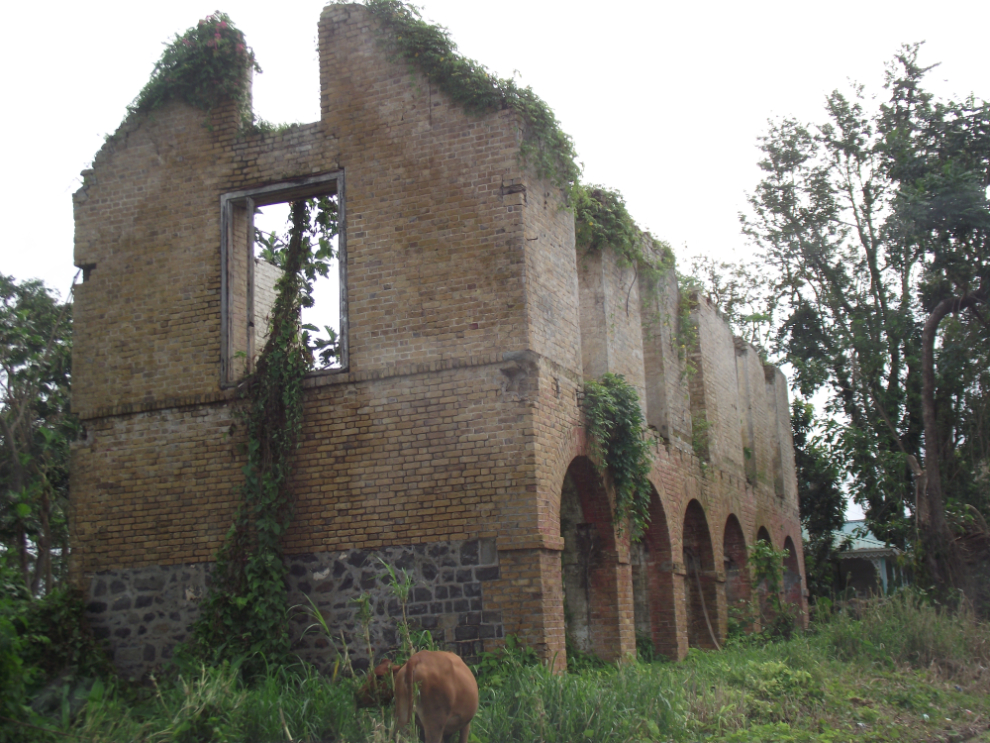
The monument ahead honours the 27th Inniskilling Regiment, which in May 1796 beat the French in a battle here and took over the Morne Fortune fortress. The young fellow in the blue shirt met our van at the gate to this high point and gave a good tour for tips.
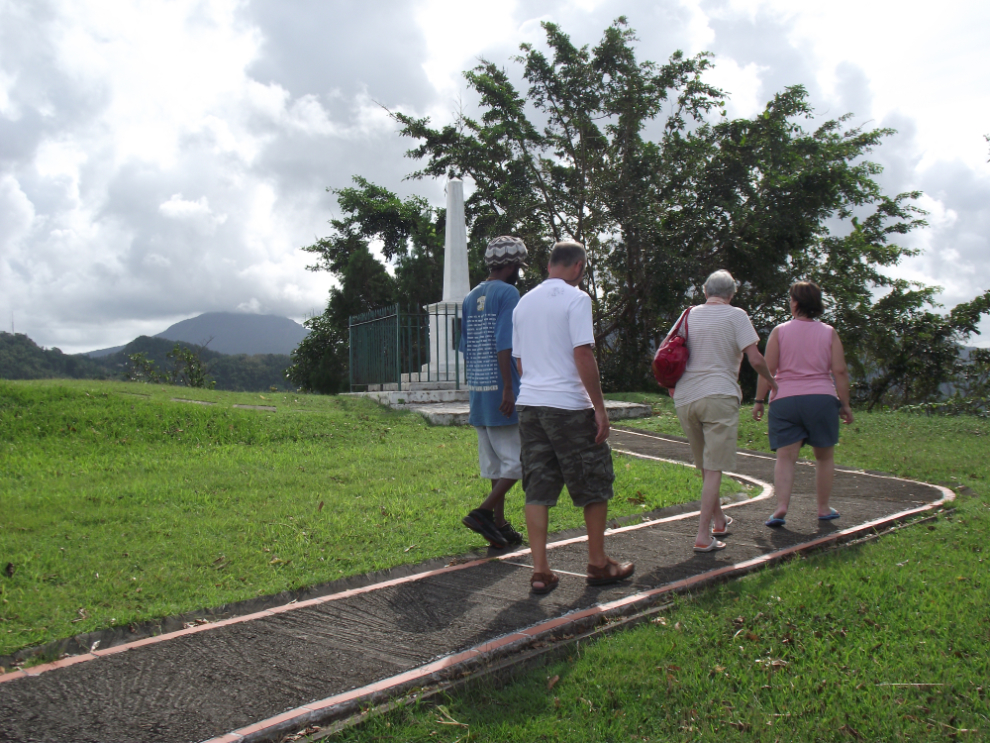
A look back down the hill from the monument.

This is a Christmas Tree, well into its winter colour change.
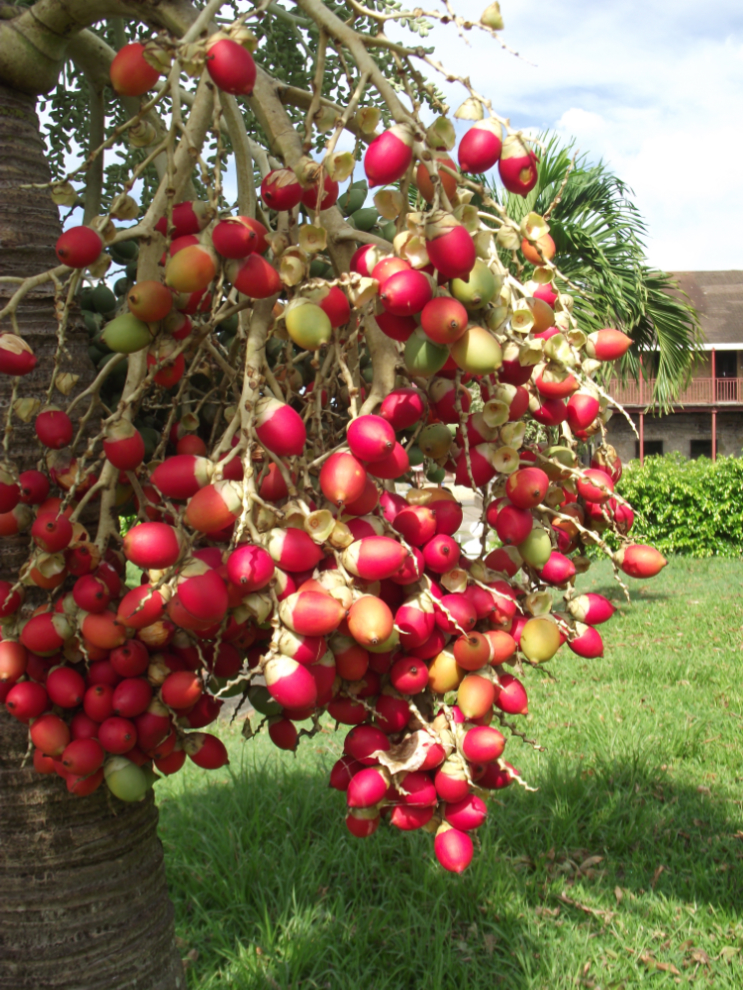
Mudslides became more and more frequent, and larger, as we continued south. It was the southern end of the island that got hammered the worst by Tomas. This photo was shot at 09:44.
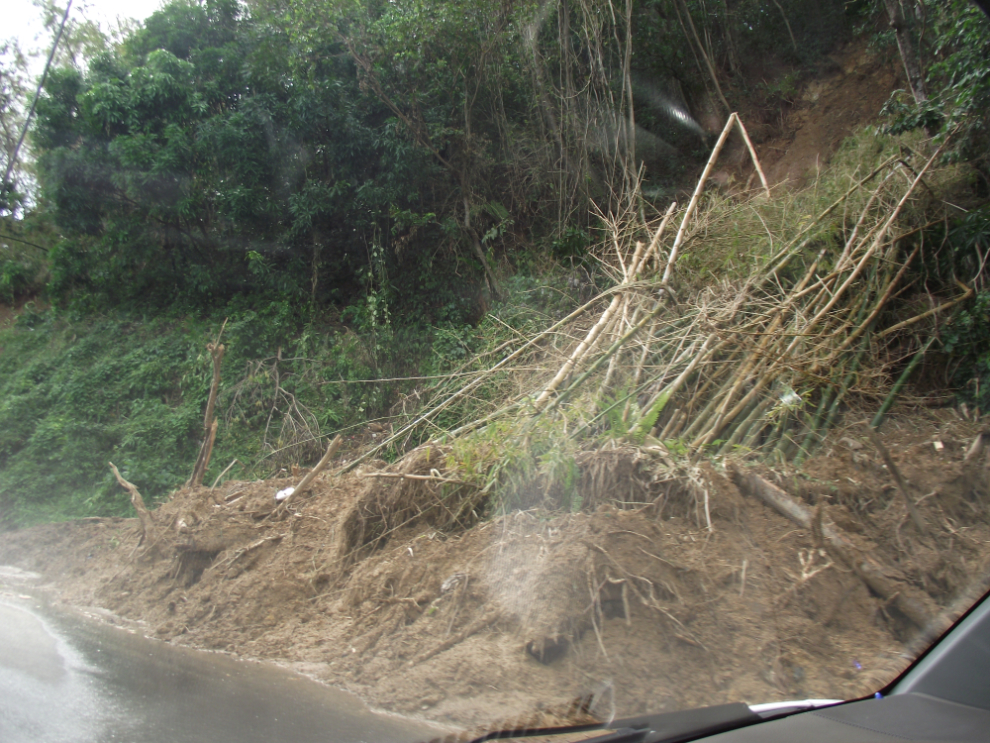
The gorge that this section of road is collapsing into is almost sheer for at least 100 feet down – a difficult repair job.
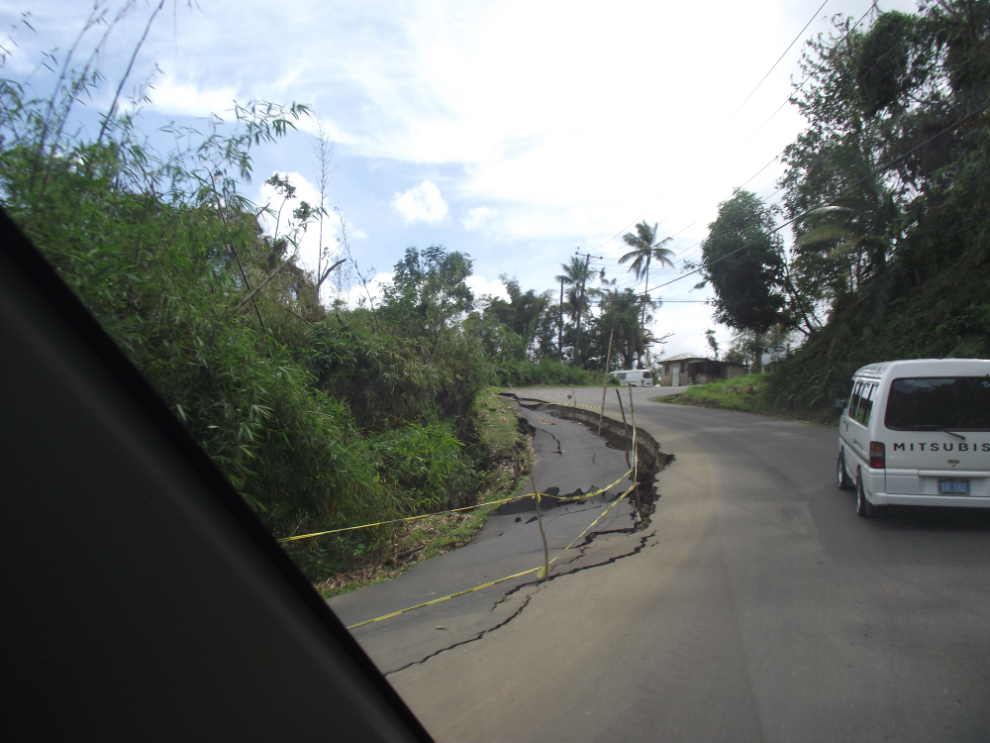
Some substantial homes have been affected even on the north end of the island. This one almost certainly has structural damage from soil collapse around and under it.

Roadside cafe/bars such as this are quite common. This one is about average in terms of both size and quality. The stove is just a propane barbecue. The bars that I saw into all seem to be very well stocked with different types of liquor.
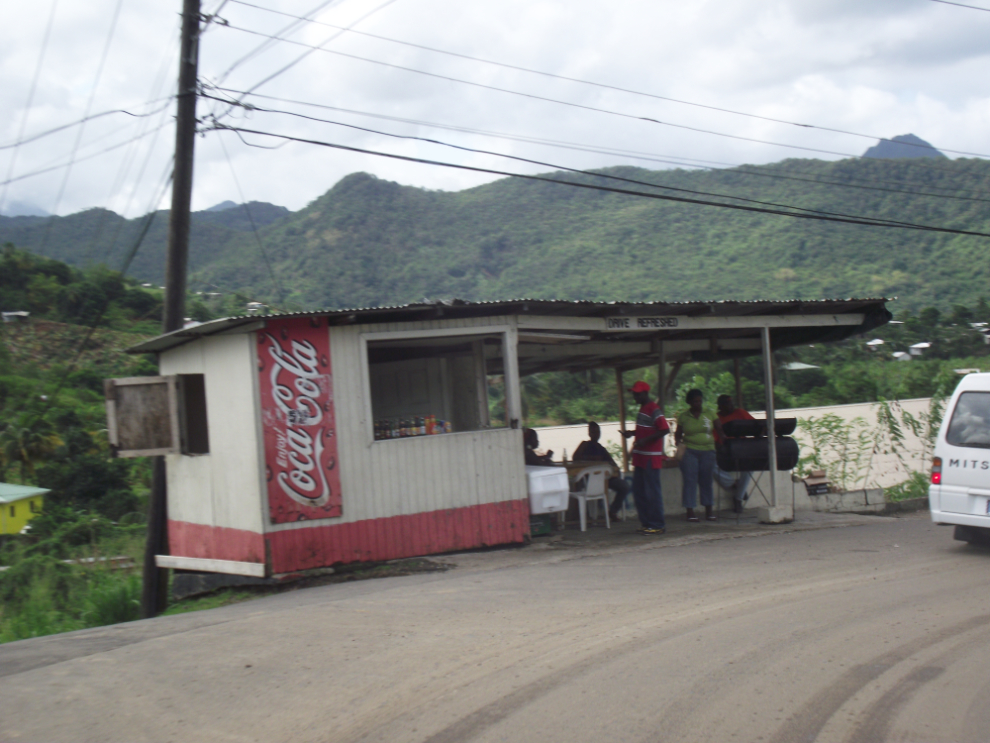
Bananas are the primary agricultural export of Saint Lucia. This large farm was badly damaged by both wind and flooding. The blue things are bagged bunches of bananas that were ready to be picked.
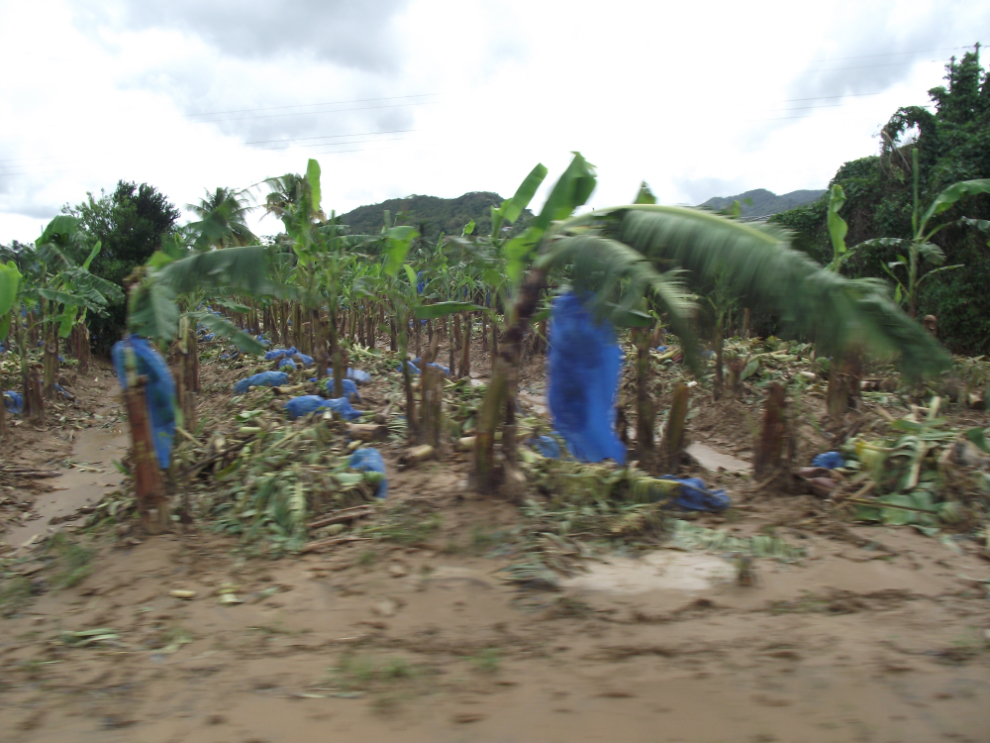
Banana pickers’ housing outside a warehouse in the middle of the farm seen above.
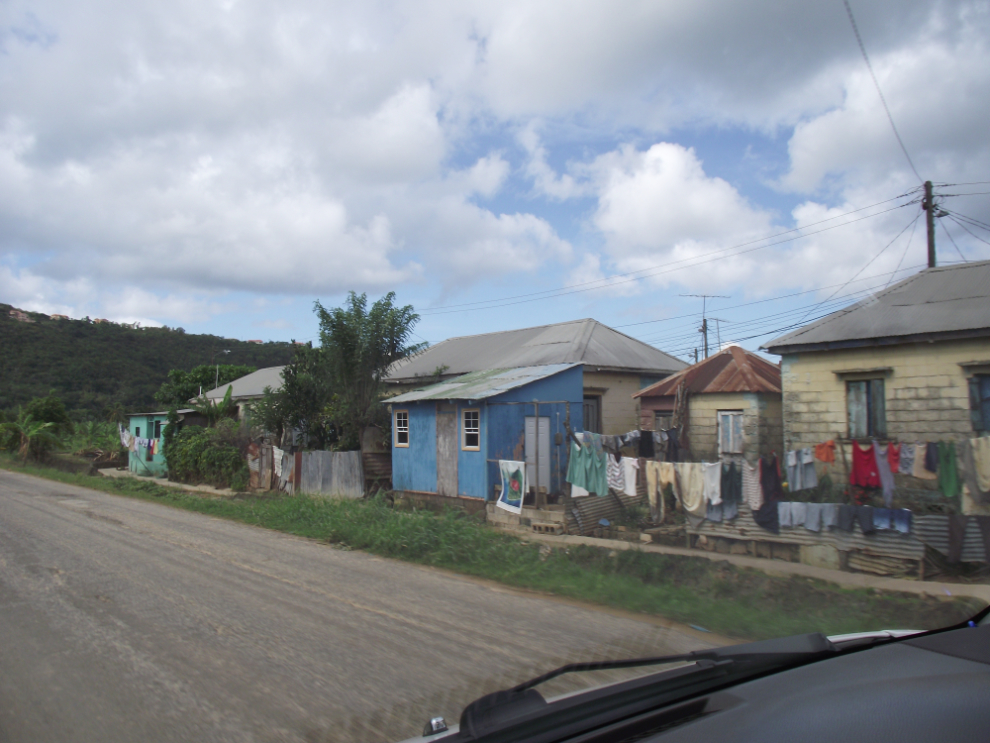
The way some of the homes are perched on the steep hillsides seems to be an invitation to disaster. Note the one right at the top!
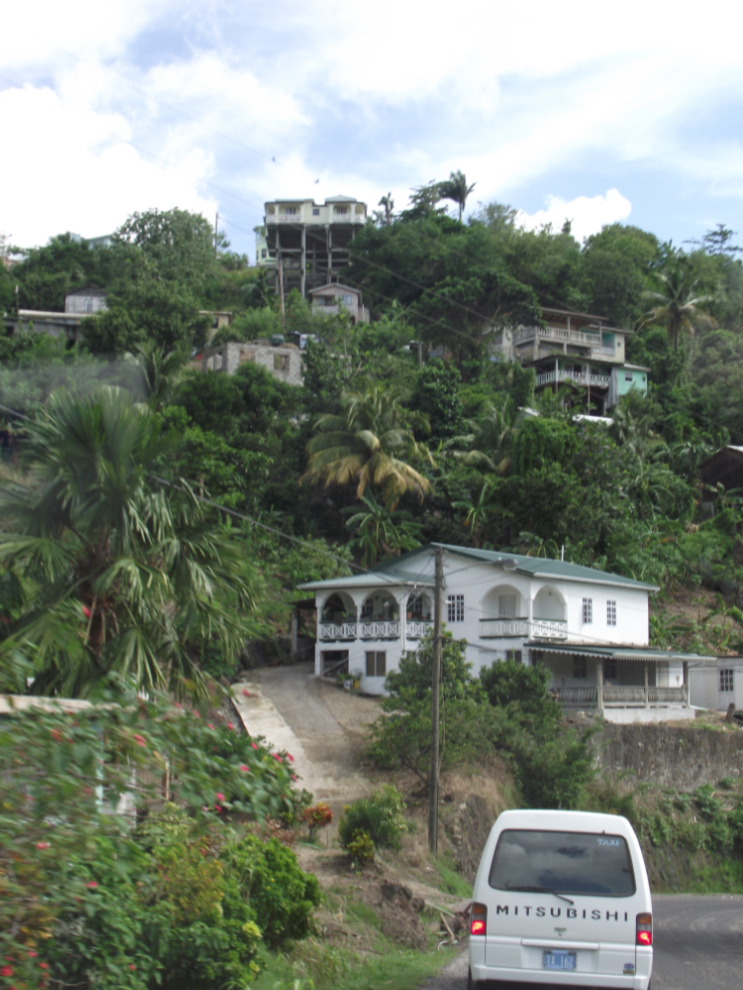
A few minutes after 10:00 we arrived at our turn-around, what our guide David termed a traditional fishing village. I asked him whether the people are poor or whether they just choose to live like this as in the village I used to live in. He answered that there are some of each.

Although there were several tour vans stopped along the shoreside road where some vendors had tables set up, I was grateful that we didn’t. The Catholic church was old and beautiful and I would have liked to stop there, though.
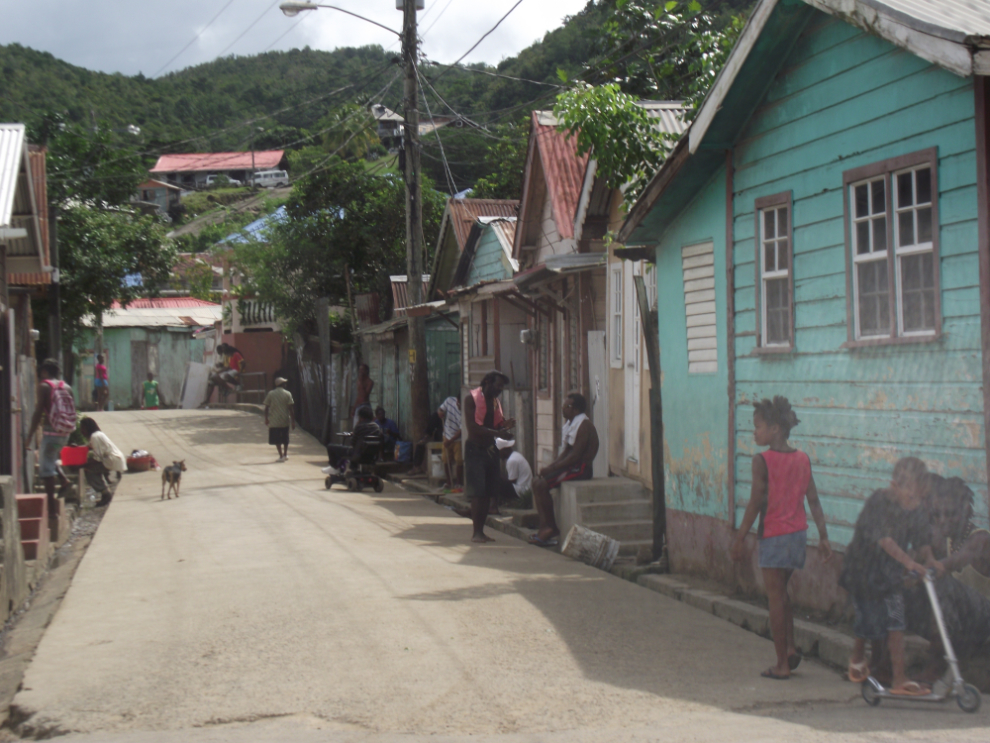
We did some backtracking, but a side road took us to this viewpoint, which was packed with tour buses and vans as well as rental cars.

Rum samples for $1, free banana mustard sampling and Piton beer for $3 US (exactly twice the price it is at the cruise facility) were all doing quite well.

This is one of only 2 road tunnels I saw on the mountainous route we took.
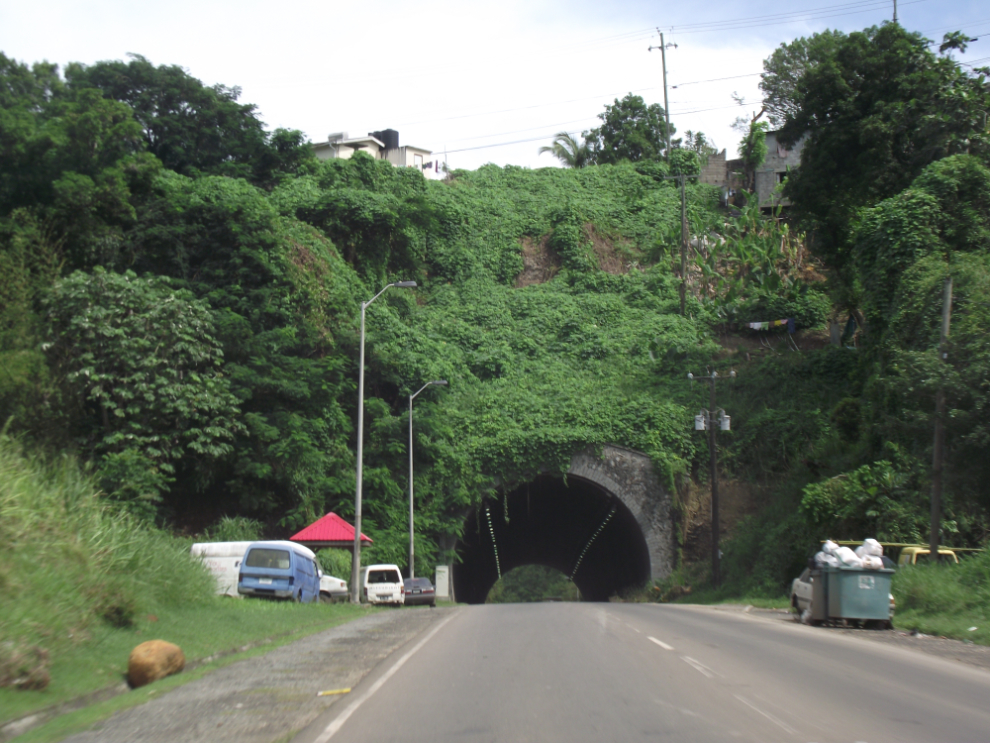
We arrived back at the ship at 11:00, mentally drained from all that we’d tried to absorb and understand. We went in and had lunch but didn’t stay long. I mentioned that Holland America had made a substantial donation to the island, and food and water were still being unloaded. While we were on tour, the Prime Minister of Saint Lucia had come down to meet Captain John Scott and accept the donation.

We unloaded over 200 tons of fresh water into these and other trucks (the ship makes its own fresh water in quantities that can far exceed what the people on board use). The red truck in this photo is a fire pumper truck.
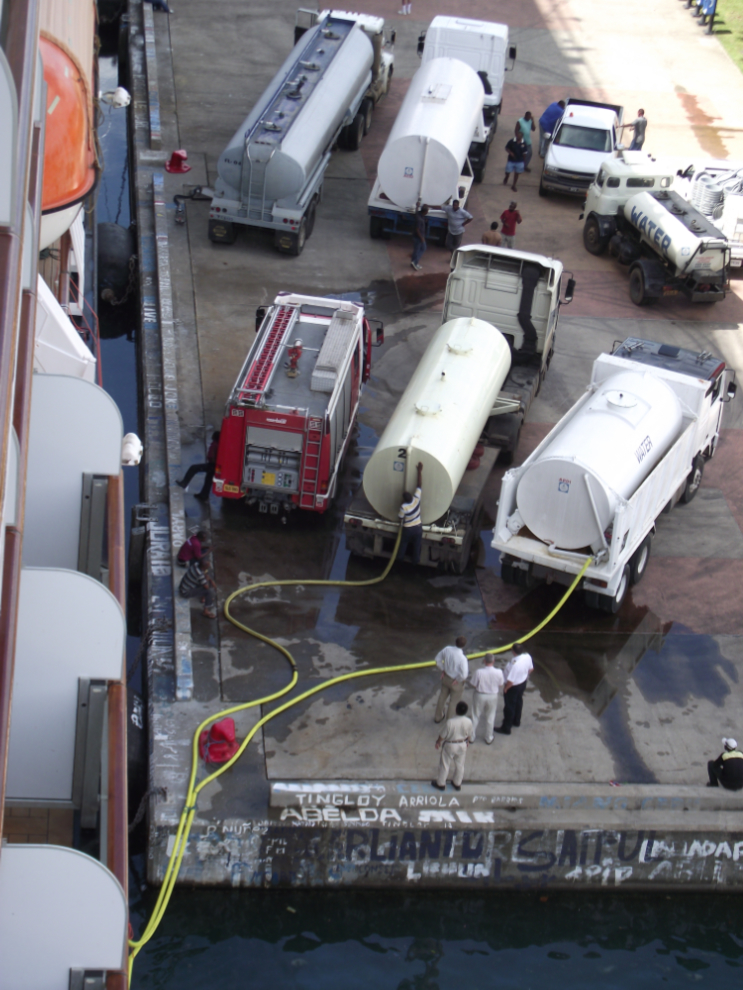
What got us off the ship again was the thought that we should have a better look at the downtown area, which can be reached on foot or by very inexpensive water taxi.
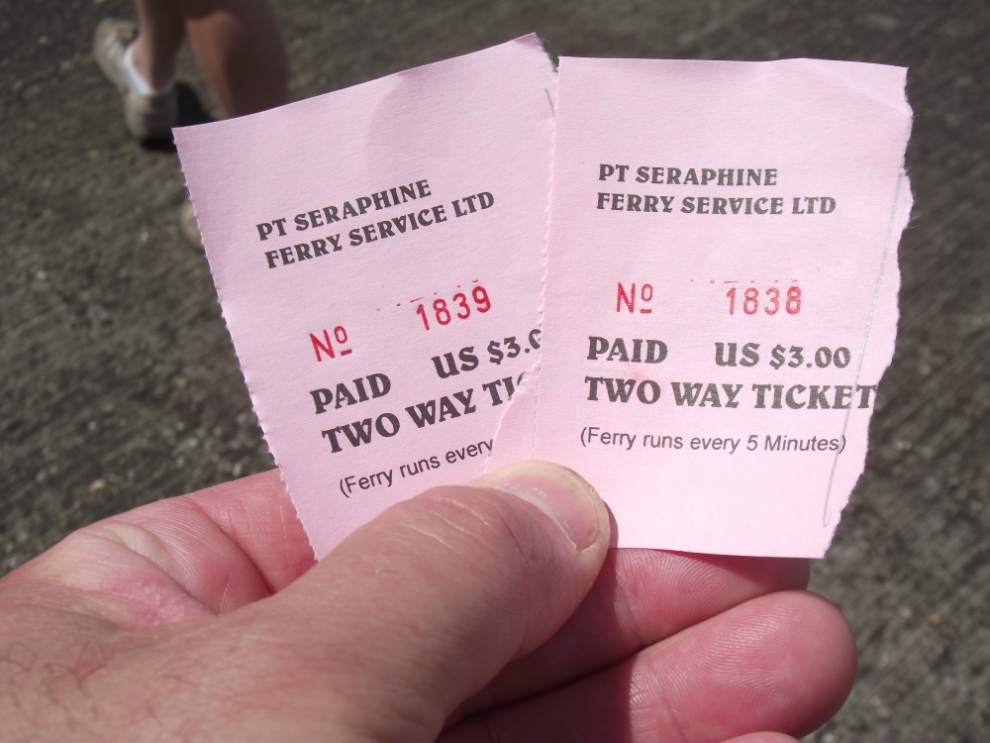
At noon we boarded this water taxi for the 10-minute run to town.
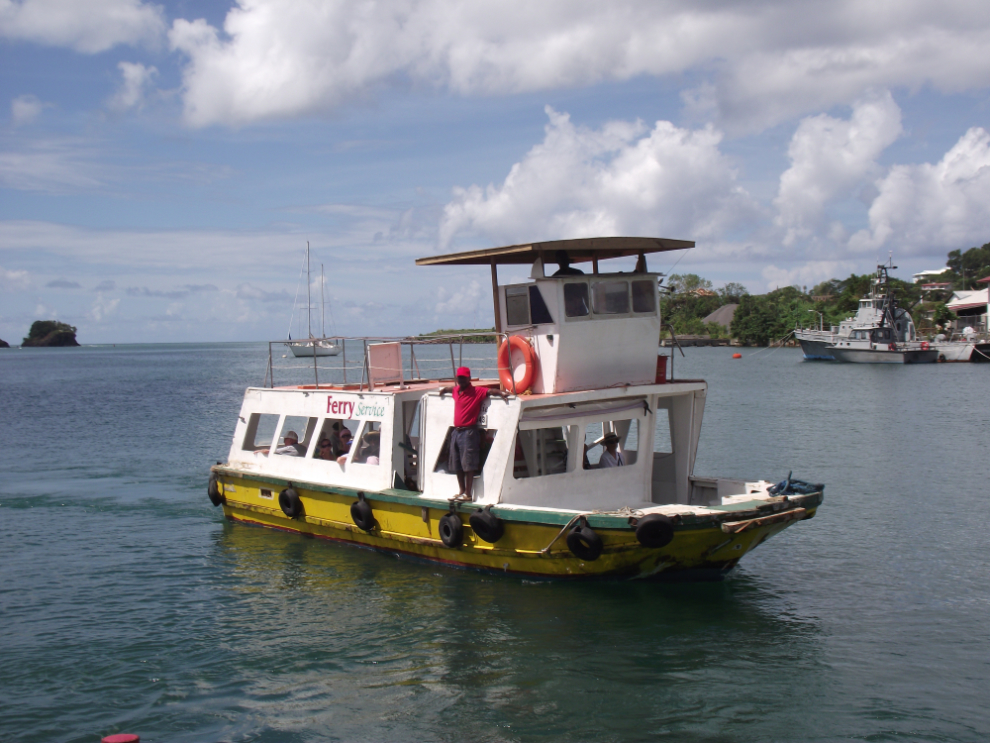
This large St. Lucia Fire Service building appears to be abandoned.
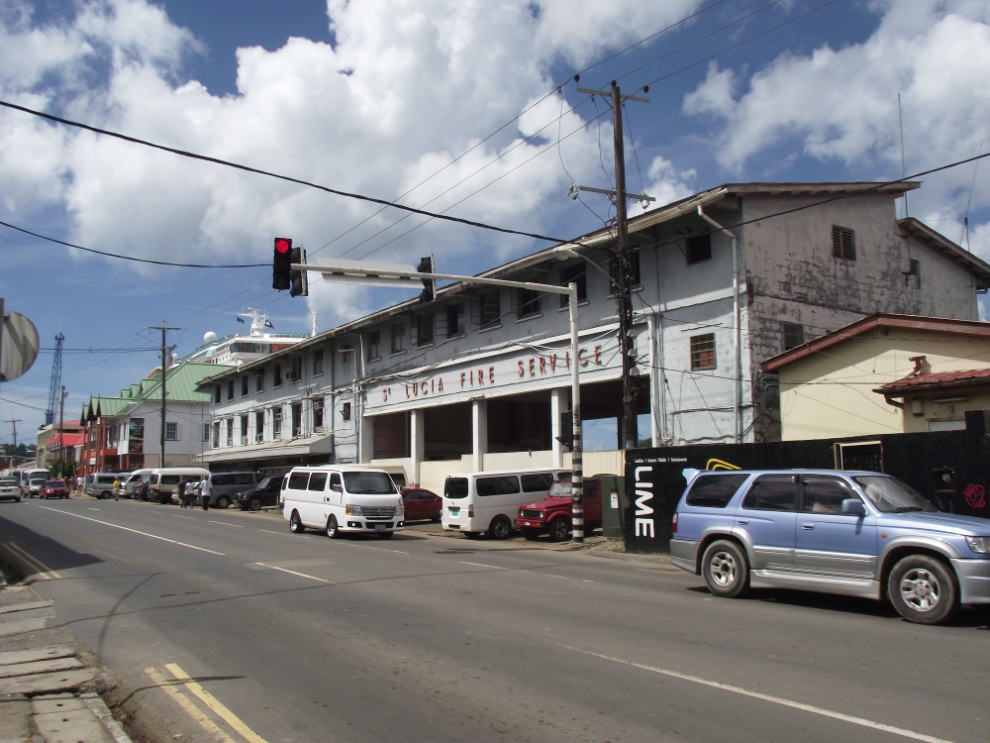
We didn’t stay in town very long – aggressive vendors drove us back to the ship. I don’t like pointing my camera at people, but I do like getting images like this, of the water taxi’s ticket collector. I’ll bet he has some stories….
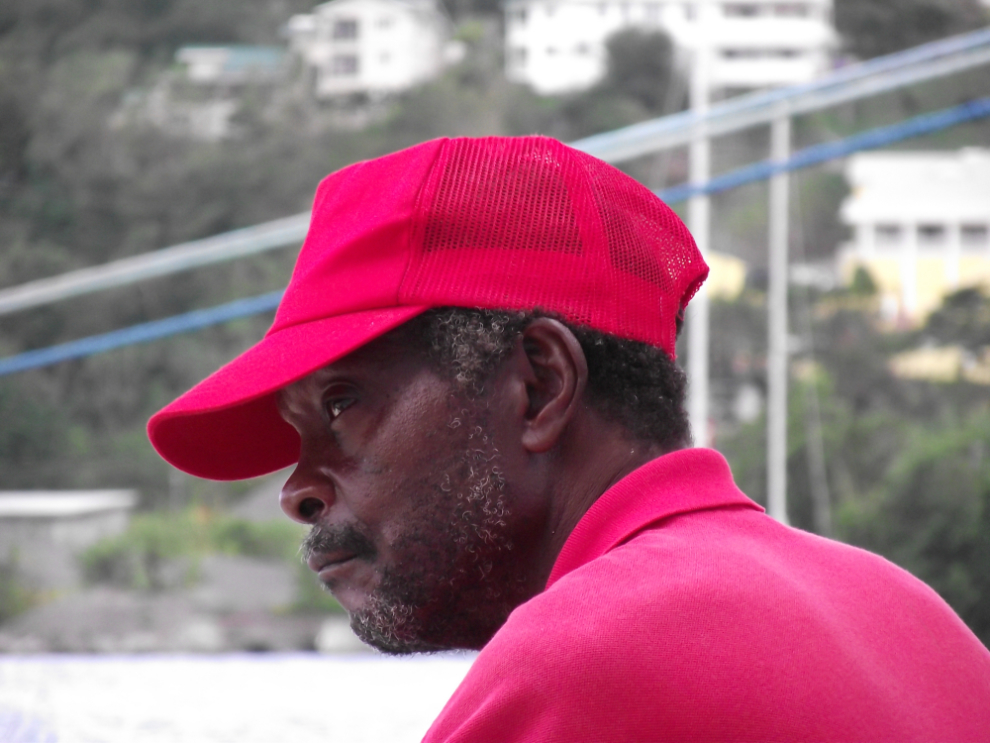
Here’s an example of the sort of extra service that Holland America is known for, being welcomed back to the ship with cold towels and drinks.
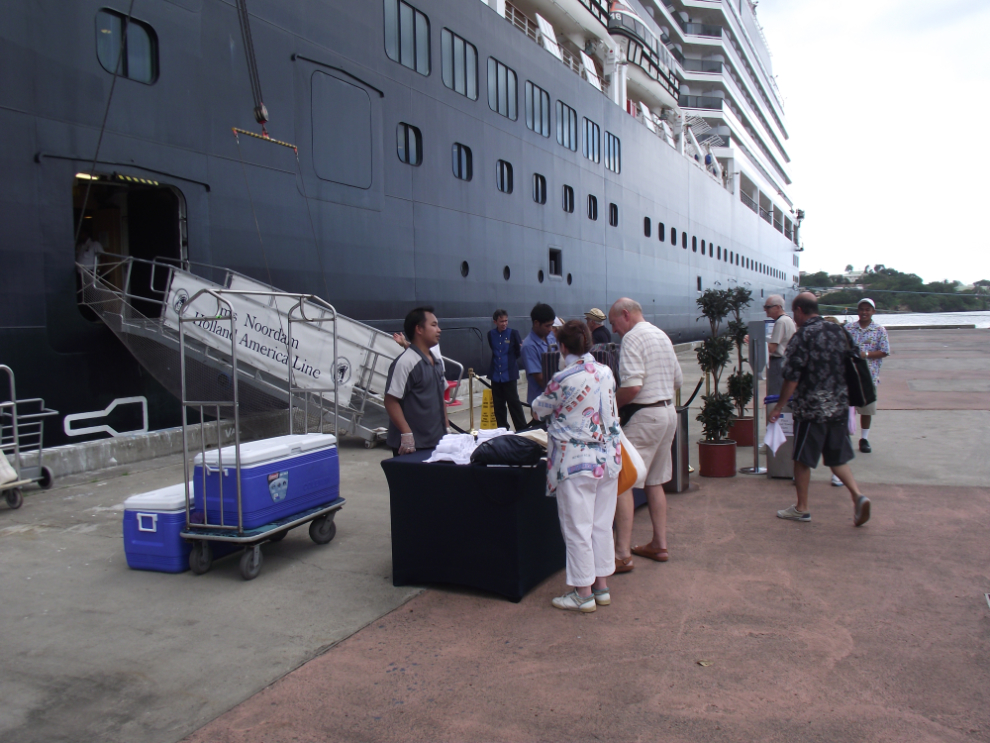
We stayed for an hour longer than our scheduled 3:00 pm departure so that we could keep pumping water to the island. These kids from a local orphanage were brought on board to have fun and play for a few hours. One of them went into hiding when it was time to leave. A plea from one of the sisters brought her out, but finding her delayed us another 25 minutes.
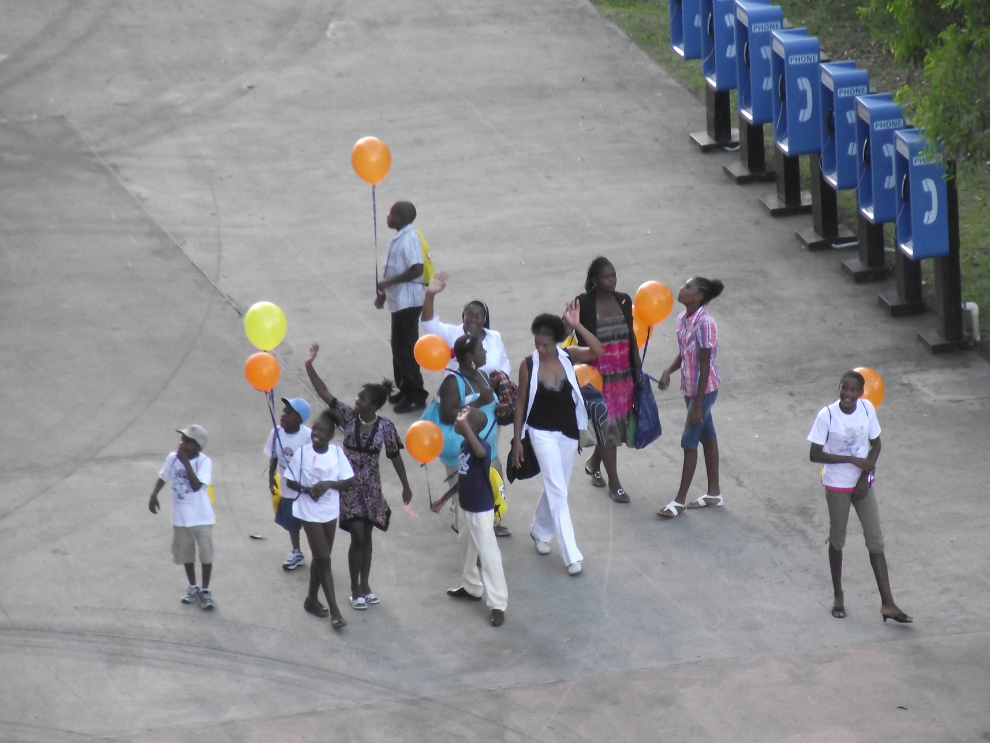
The harbour entrance is very narrow so we backed out into the open ocean, past this lovely litle park.

Going to a tanning salon a few times before leaving home was a good idea. We can stay out in the sun much longer without getting fried, and both of us have already got great tans.
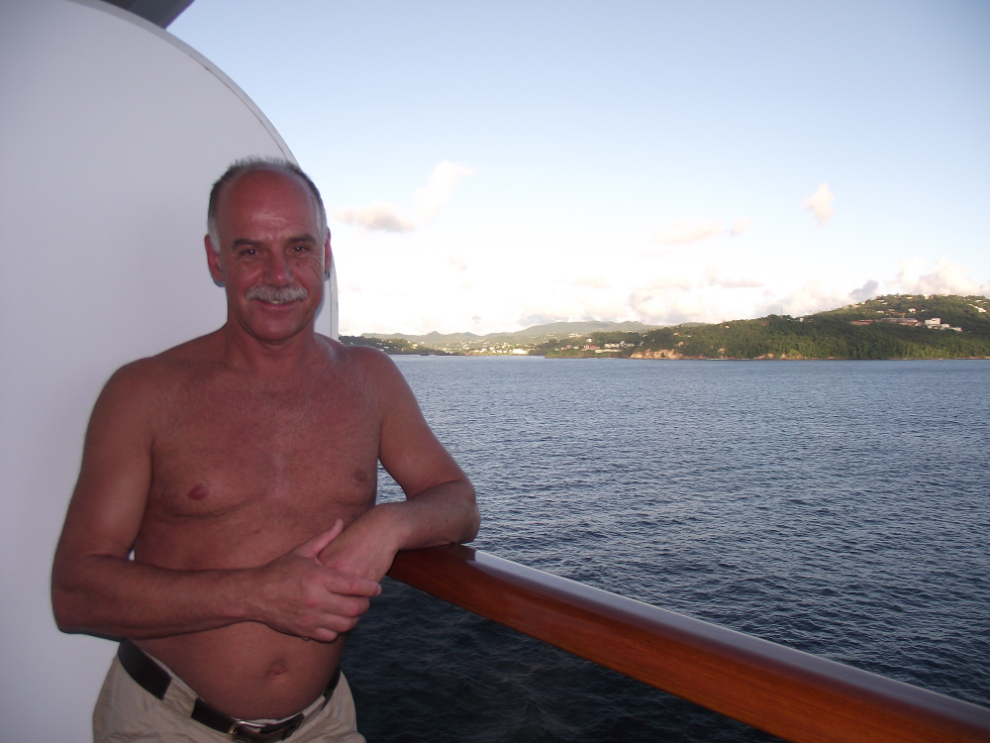
We were scheduled for a scenic sailing down the coast, picking up passengers from some excursions in Soufriere. All those excursions were cancelled, though, and our late departure resulted in darkness falling before we got very far. There are building ruins at the top of this impressive cliff, seen at 5:17 pm.

This is the scenic view of the fishing village we ended up at on the tour. You can see the Catholic church I mentioned, lit up to the right in the village.
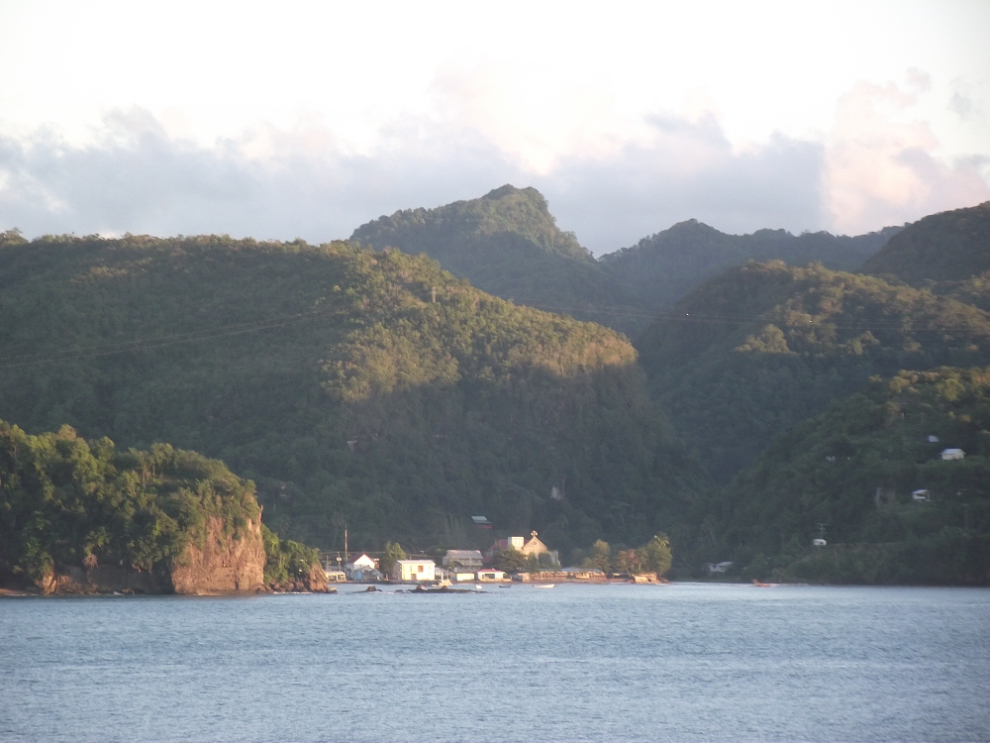
One of the villages we’d love to see on our next visit.
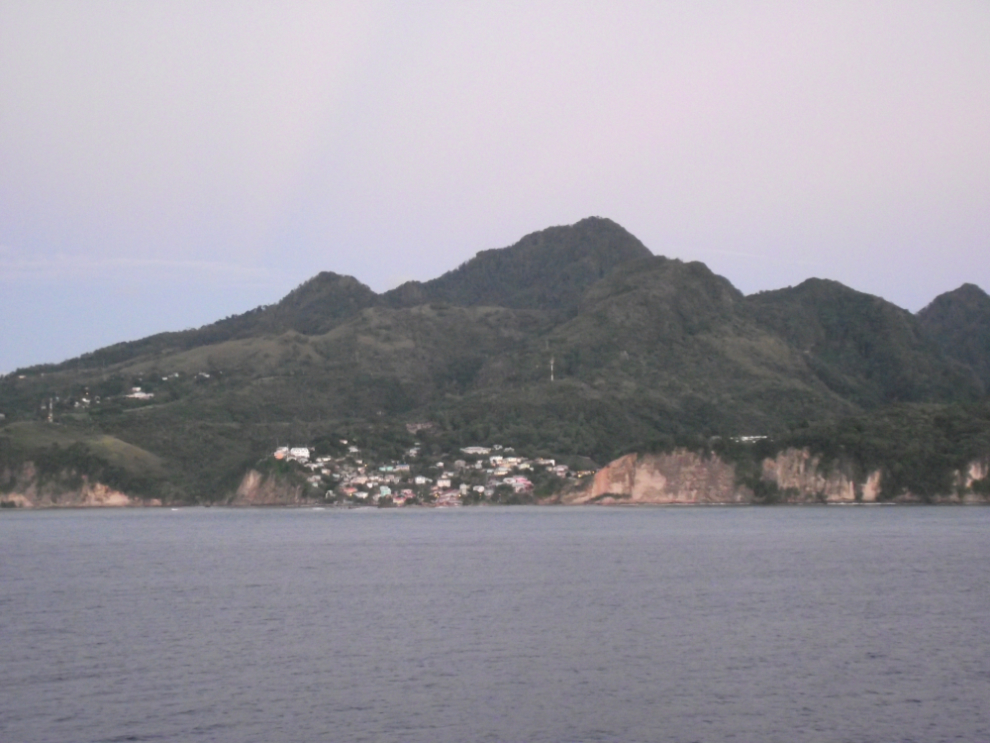
This is the best photo I got of the famous Pitons, at 5:47. The ship sailed right in close to them at 6:00 but it was too dark to see anything except a vague outline.
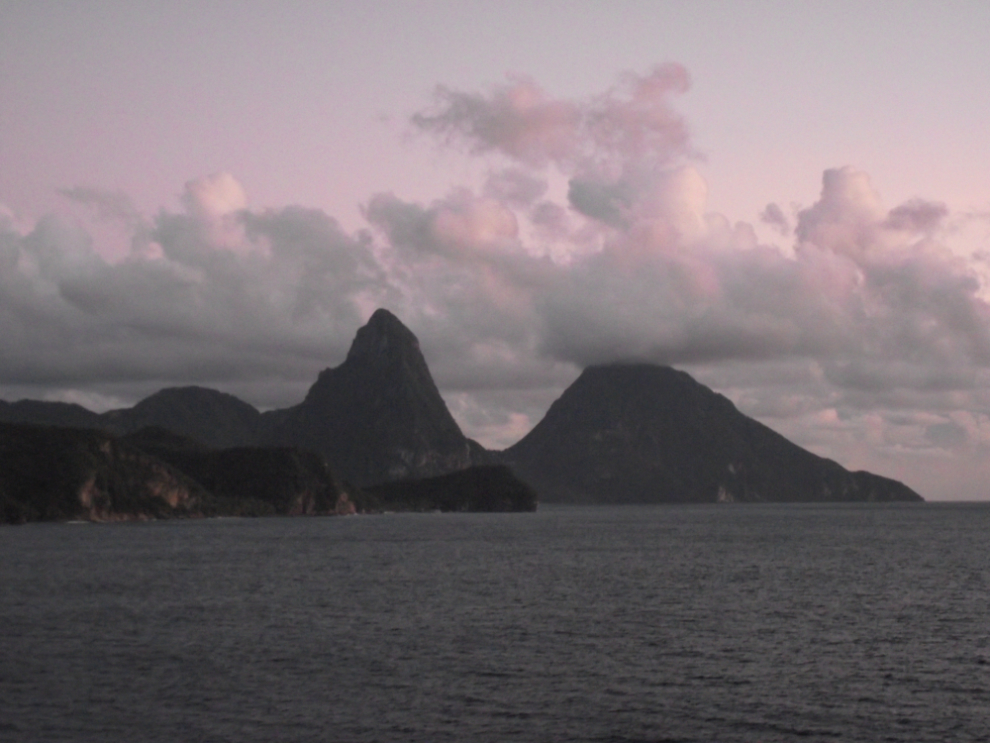
Our visit to St. Lucia wasn’t what we’d planned, but we did see enough to know that we want to come back some day. The next stop is Bridgetown, Barbados, where we have a day of sailing and snorkeling planned.